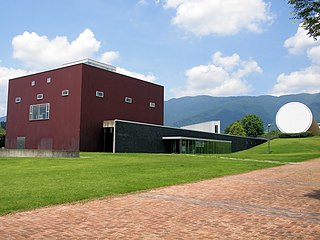 W
WThe Hayashibara Museum of Art is an art museum owned by the Hayashibara Group, and located at 2-7-15 Marunouchi, Kita-ku, Okayama, the site of a former guesthouse beside the inner moat of Okayama Castle. Its 6,832 square meter interior was designed by Kunio Maekawa.
 W
WKawasaki Medical School is a private university in Kurashiki, Japan, established in April 1970.
 W
WThe Nagi Museum Of Contemporary Art is a museum in Nagi, Okayama, Japan. It was jointly created by architect Arata Isozaki and artists whose works are displayed.
 W
WOkayama Castle is a Japanese castle in the city of Okayama in Okayama Prefecture in Japan. The main tower was completed in 1597, destroyed in 1945 and replicated in concrete in 1966. Two of the watch towers survived the bombing of 1945 and are now listed by the national Agency for Cultural Affairs as Important Cultural Properties.
 W
WOkayama Orient Museum is a museum of Ancient Near Eastern, Roman provincial, Byzantine, Sassanian, and Islamic Art in Okayama, Okayama Prefecture, Japan. As of 2007 there were some 4,852 items, including winged Assyrian reliefs. The museum is a prize-winning design by Okada & Associates.
 W
WOkayama Prefectural Museum is a museum in Okayama, Japan. It was built to house important artifacts from the prefecture dating from prehistory through modern times.
 W
WThe Okayama Prefectural Museum of Art is located in Okayama, Okayama Prefecture, Japan. It is one of Japan's many museums which are supported by a prefecture.
 W
WTsuyama Railroad Educational Museum is a railway museum in Tsuyama, Okayama, Japan, operated by West Japan Railway Company since 2 April 2016. It is based around the former Tsuyama Depot roundhouse, which was used to house a number of preserved locomotives since 2007.
 W
WYumeji Art Museum is an art museum in Okayama Prefecture split between the Honkan in Okayama and the Yumeji Seika and Shonen Sanso built in Setouchi, the birthplace of Yumeji Takehisa, a poet and artist who was active in the early 1900s.